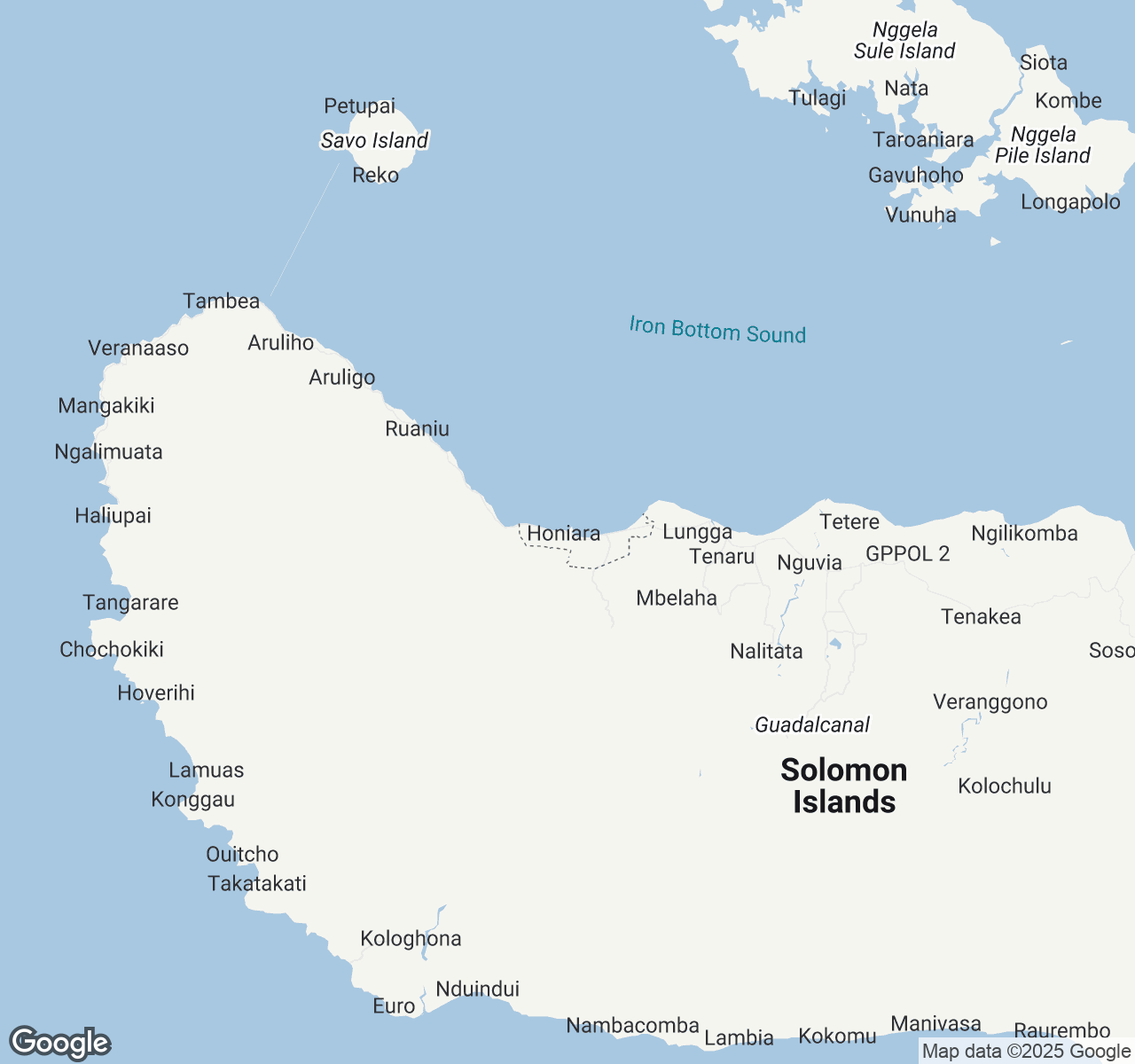
Things to Do in Honiara
Discover the best of Honiara
Plan Your Trip
Essential guides for timing and budgeting
Top Things to Do in Honiara
Discover the best activities and experiences. Book now with our trusted partners and enjoy hassle-free adventures.
Your Guide to Honiara
About Honiara
Where coral-fringed waters meet volcanic peaks and the echoes of wartime history mingle with busy Melanesian traditions, Honiara emerges as the beating heart of the Solomon Islands. This unpretentious capital city unfolds along Iron Bottom Sound, where rusted remnants of World War II vessels rest beneath crystalline waters that shimmer with an otherworldly blue. The air carries the intoxicating blend of frangipani blossoms and salt spray, while the rhythm of island life pulses through bustling markets filled with tropical fruits and handwoven crafts. Here, modern Solomon Islanders honor ancient customs with quiet dignity, speaking in melodic pidgin while navigating between traditional stilted houses and contemporary structures. Honiara doesn't overwhelm with grand monuments or luxury resorts; instead, it captivates through authentic human connections, where strangers become friends over shared stories and kava ceremonies. This is a place where time moves differently, where the urgency of the outside world dissolves into the gentle cadence of Pacific island existence.
Travel Tips
Transportation: Taxis are the primary transport option with no meters—negotiate fares beforehand (expect SI$50-100 for city trips). Rental cars require advance booking and international licenses. Local buses run irregularly but cost only SI$5-10 per journey.
Money: Solomon Islands Dollar (SBD) is the only accepted currency. ATMs are scarce—bring Australian dollars or USD to exchange at banks. Credit cards work only at major hotels and some restaurants. Always carry cash.
Cultural Respect: Remove shoes before entering homes and churches. Avoid pointing with your finger—use an open palm instead. Ask permission before photographing people. Dress modestly, covering shoulders and knees, especially when visiting villages or religious sites.
Food Safety: Stick to bottled or boiled water. Local markets offer fresh tropical fruits—choose items you can peel yourself. Seafood is generally safe at established restaurants. Try traditional dishes like kokoda (raw fish in coconut) at reputable venues only.
When to Visit
Honiara enjoys a tropical climate with two distinct seasons. The dry season (April-October) offers the most comfortable conditions with temperatures averaging 24-28°C, minimal rainfall (50-100mm monthly), and gentle trade winds. This peak period sees accommodation prices increase 25-40%, requiring advance bookings. The wet season (November-March) brings higher temperatures (26-32°C), substantial rainfall (200-400mm monthly), and humidity levels reaching 85%. However, this off-peak period offers 20-30% savings on hotels and fewer crowds. Cyclone season (December-April) presents some risk, though direct hits are rare. Festival enthusiasts should visit during Independence Day celebrations (July 7) featuring traditional dancing and cultural displays, or the Solomon Islands Festival of Arts (every four years in July). Diving enthusiasts find excellent visibility year-round, though April-June offers optimal conditions. Budget travelers benefit most from May-June and September-October when weather remains favorable while prices drop. Families with children should avoid January-March due to intense heat and rainfall. Business travelers find the best conditions during the shoulder months of April-May and September-October when weather is pleasant and local activities resume normal schedules after the wet season.

Honiara location map